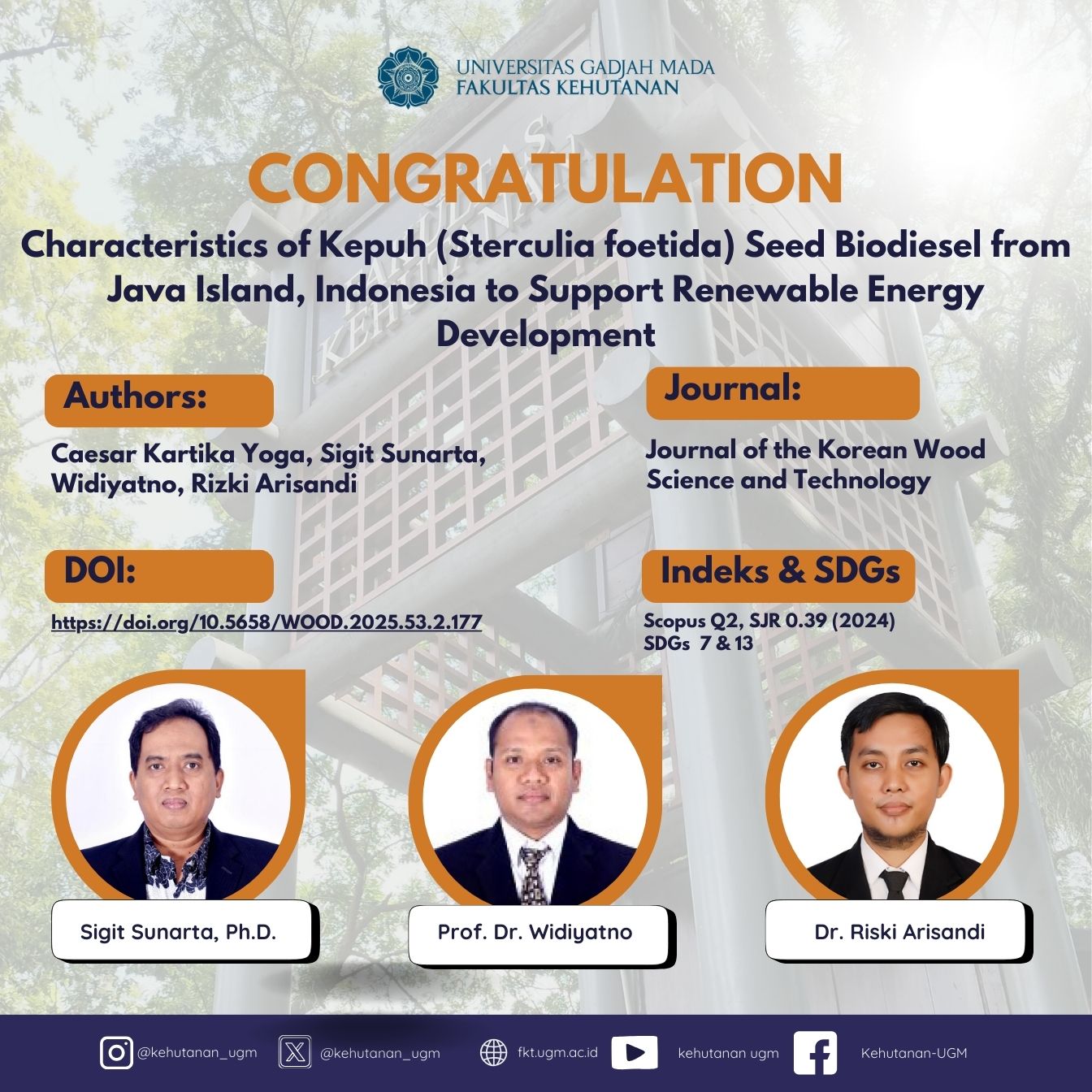
Abstract
Several non-edible plants, including kepuh (Sterculia foetida), are used as feedstock for biodiesel production in Indonesia. This study aimed to evaluate site-specific variations in biodiesel yield, characteristics, and chemical composition from seeds of S. foetida from 25 locations on Java Island and select superior seed sources for renewable energy development based on the quality of the produced biodiesel. The biodiesel yields ranged from 23.6% to 26%. The biodiesel quality parameters, such as density (839.00 to 889.74 kg/m3), kinematic viscosity (2.58 to 4.53 cSt), acid value (0.039 to 0.502 mgKOH/g), saponification value (195.51 to 253.27), iodine number (59.71 to 110.0 mgI2/100 g), cetane number (46.47 to 60.03), total glycerol (0.013% to 0.052%), and methyl ester content (99.28% to 99.79%), were within acceptable ranges. Gas chromatography-mass spectrometry analysis revealed that the five major fatty acid methyl esters in the biodiesel were sterculic acid (57.5% to 69.16%) as the dominant compound, followed by palmitic acid (11.95% to 18.81%), linoleic acid (4.47% to 9.52%), oleic acid (3.99% to 7.12%), and 10-octadecynoic acid (2.30% to 5.81%). Using Ward’s hierarchical clustering method, biodiesel samples were grouped into three distinct clusters. Cluster II, particularly biodiesel from site K24 (Majalengka), demonstrated the most optimal results with a high cetane number, making it a promising planting material for biodiesel production.
SDGs:
SDG 7: Clean Energy
SDG 13:Climate Action
Link Dokumen:
Download
